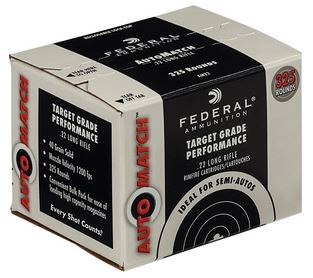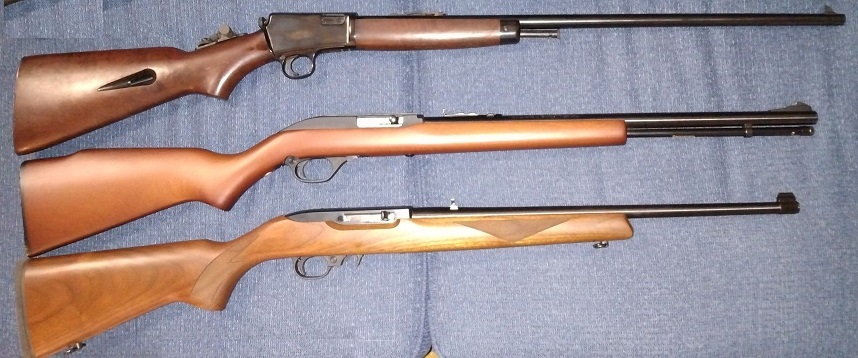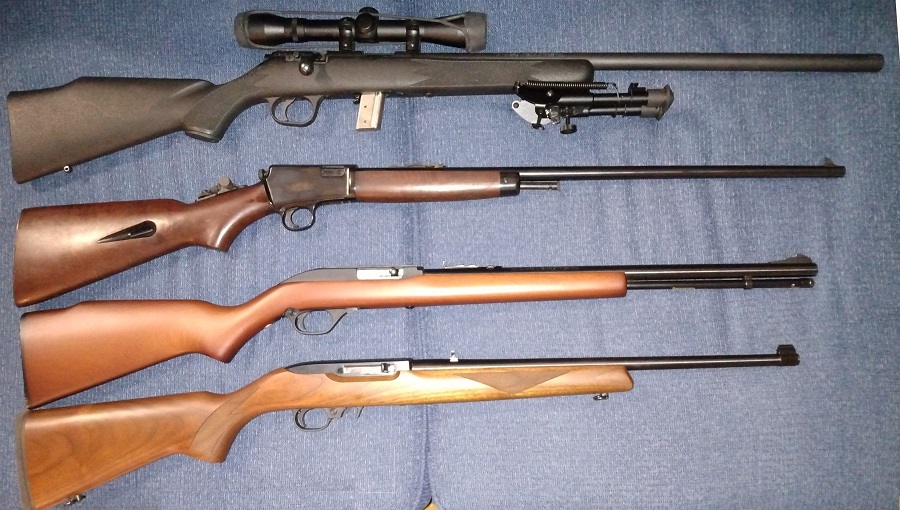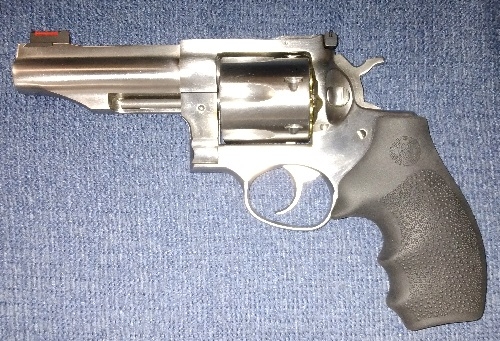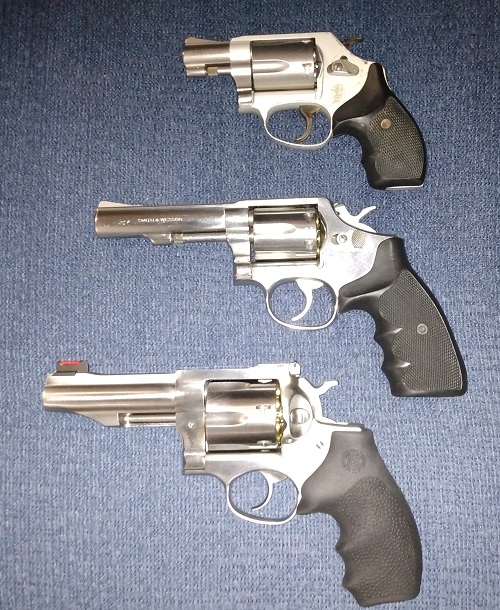I’ve often spoken about how a specific .22 rifle or pistol will have a “preference” for a specific kind of ammo. Last time I said that, I got an email from Reader Don K., who asked simply: “Got the targets from that exercise?”
Well, it’s taken me nigh on three days to find it, but I have.
The test was done indoors at the DFW Gun Range in Dallas, back in 2003 or 2004. Here’s the rifle used in the test, my Marlin 880 SQ topped with a 4x fixed scope (don’t remember the brand, sorry — I’ve since replaced it with the variable Bushnell in the pic):
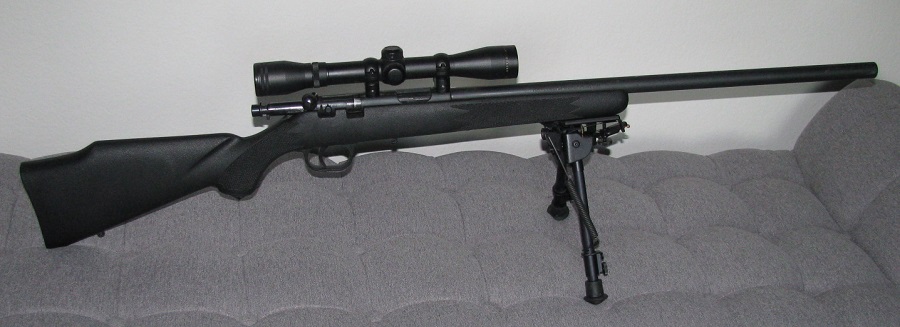
…and here’s the ammo I tested:
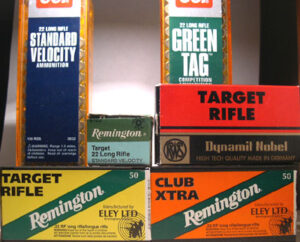
I don’t remember the distance — I think it was 25 yards — but it’s irrelevant because the 1″ targets were all stuck on the same piece of paper.
I first checked the scope’s zero by firing a 5-shot string of my go-to .22 LR (CCI Mini-Mag High Velocity) just to set the scene, so to speak:
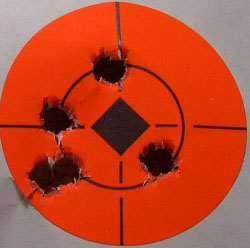 …and then I got serious.
…and then I got serious.
The barrel was allowed to cool between each 5-shot string, and one of the range guys loaded each mag for me so that I never knew which ones I was shooting at any given time. All shots were aimed-deliberate (i.e. not timed), and the scope was never adjusted in any way during the shoot. For clarity, the results are listed clockwise as in the picture above, but I don’t think that’s the order in which I shot them. When I say in comments that the shot “felt good”, it means that as far as I could tell, it should have hit the point-of aim, i.e. the bottom of the little black diamond.
CCI Mini-Mag Standard Velocity
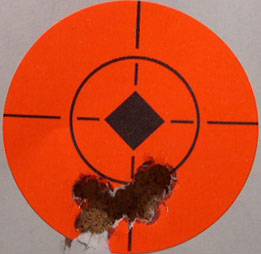
(no flyers called; all felt good)
Remington Target:
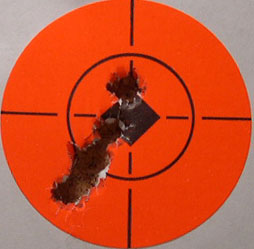
(the 12 o’clock miss was a called flyer)
CCI Green Tag:
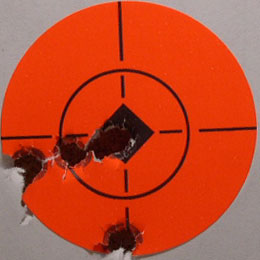
(the 6 o’clock miss was a called flyer)
RWS Dynamit Nobel Target Rifle:
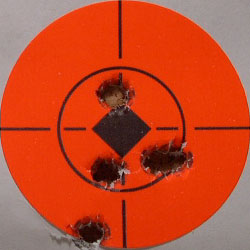
(no flyers called; all felt good)
Remington Eley Club Extra:
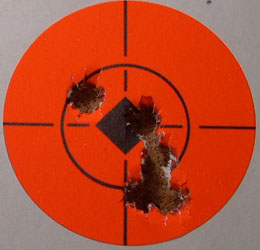
(no flyers called; all felt good)
Remington Eley Target Rifle:
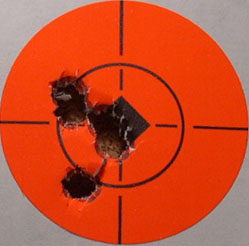
(no flyers called; all felt good)
So: same gun & scope, same shooter, same distance, same session… and different results.
I have to say that my memory tells me that I was most surprised / disappointed by the Green Tag and the Dynamit Nobel results, and most impressed by the Remington Eley Target Rifle. Here’s why.
As you become more and more accustomed to shooting .22 LR, you will find that it becomes easier within a string to call a “light” or “heavy” strike, caused by a lighter or heavier powder loading respectively. You can pretty much overcome this variance by weighing each round before shooting it, by the way, but I didn’t do that before this range test. Perhaps I should have, but I assumed that spendy target ammo should all be consistent within a box; well, they weren’t. When I later shot off some Green Tag, I could tell that at least two out of seven rounds felt “light”, which frankly is unacceptable for premium ammo. (Why seven? That’s what the magazine holds.)
All the Eley Target Rifle rounds felt absolutely consistent when fired, so that seven o’clock “flyer” is the fault of Yours Truly.
Anyway, that’s how that ammo worked for me, in that rifle. I have no doubt that the results might be different in another rifle, in the hands of another shooter perhaps, but that’s the fun of the thing, isn’t it?
Addendum: here’s a consecutive set of targets I also found (from a range session at about the same time as the above test) which show the benefit of practice and concomitant familiarity. All three 10-round strings were fired offhand from my then-new Ruger MkII Target Bull Barrel pistol, with the same ammo, distance unknown.
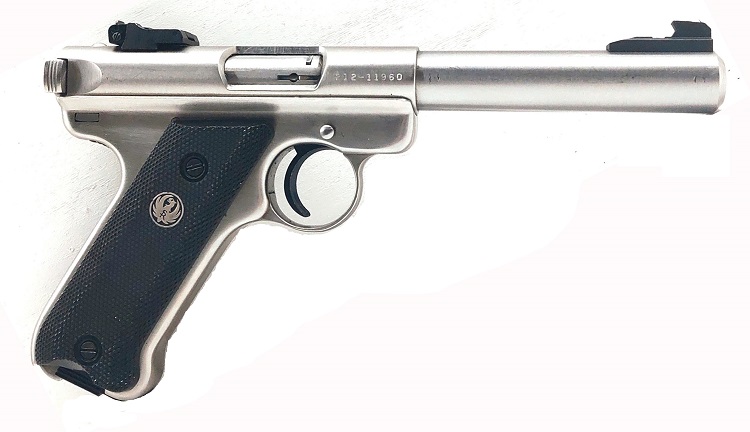
It was the first time I’d ever fired that gun.

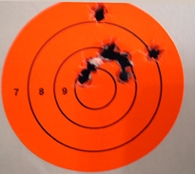
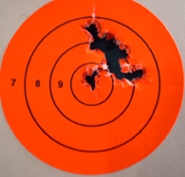
Note the tightening of the group as I got more in tune with the trigger. (I wish I could still shoot that well, but two decades or so have had their way with my eyes, damn it.)

